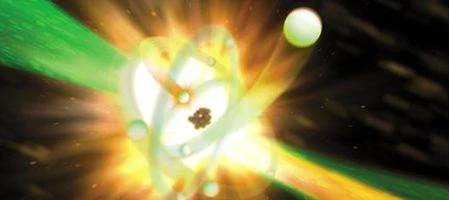Department of Energy scientists have built the world’s hottest laser, delivering temperatures hotter than the corona of the sun.

The team at the SLAC National Accelerator Laboratory has created the shortest, purest X-ray laser pulses ever achieved, by aiming the Linac Coherent Light Source (LCLS) at a capsule of neon gas. This sets off an avalanche of X-ray emissions to create the world’s first atomic X-ray laser – and temperatures of two million degrees.
“X-rays give us a penetrating view into the world of atoms and molecules,” says physicist Nina Rohringer, who led the research.
“We envision researchers using this new type of laser for all sorts of interesting things, such as teasing out the details of chemical reactions or watching biological molecules at work. The shorter the pulses, the faster the changes we can capture. And the purer the light, the sharper the details we can see.”
Back in 1967, scientists suggested trhat it should be possible to make X-ray lasers in the same way as many visible-light lasers – by inducing electrons to fall from higher to lower energy levels within atoms, releasing a single color of light in the process.
But until 2009, when LCLS came online, there was no X-ray source powerful enough.
The team achieved its results by using LCLS’s X-ray pulses – each a billion times brighter than any available before – to knock electrons out of the inner shells of many of the neon atoms in the capsule.
When other electrons fall in to fill the holes, about one in 50 atoms responds by emitting a photon in the X-ray range. These rays then stimulate neighboring neon atoms to emit more X-rays, creating a domino effect that amplifies the laser light 200 million times.
Although LCLS and the neon capsule are both lasers, they create light in different ways and emit a different type of light. LCLS passes high-energy electrons through alternating magnetic fields to trigger production of X-rays, making its X-ray pulses brighter and much more powerful.
The atomic laser’s pulses are only one-eighth as long and their color is much more pure – qualities, say the researchers, that will enable it to illuminate and distinguish details of ultrafast reactions that have been impossible to see before.
“This achievement opens the door for a new realm of X-ray capabilities,” says LCLS instrument scientist John Bozek. “Scientists will surely want new facilities to take advantage of this new type of laser.”
For example, says the team, it should be possible to use both LCLS and atomic laser pulses in a synchronized one-two punch. The first laser would trigger a change in a sample under study, and the second record – with atomic-scale precision – any changes that occurred within a few quadrillionths of a second.
In future experiments, Rohringer says she will try to create even shorter-pulsed, higher-energy atomic X-ray lasers using oxygen, nitrogen or sulfur gas.






